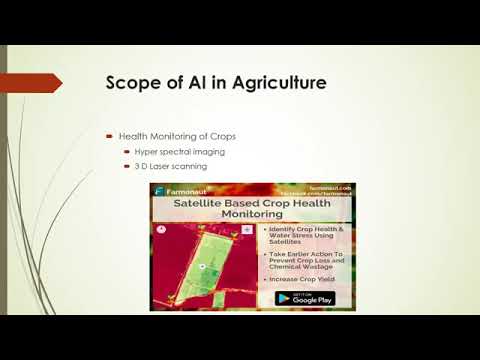Revolutionizing Australian Healthcare: Breakthrough in Biomedical Engineering and Optical Sensing Technology
“A nanoscale 3D-printed endoscope, smaller than a human hair, revolutionizes cardiac risk assessment in Australian healthcare.“
In the realm of biomedical engineering and healthcare innovation, Australia has emerged as a frontrunner, pushing the boundaries of what’s possible in medical technology. We are witnessing a transformative era where cutting-edge research and interdisciplinary collaboration are reshaping the landscape of patient care. At the heart of this revolution is a groundbreaking achievement that combines the precision of nanoscale 3D printing with the power of optical fiber technology.
The Pioneering Force: Associate Professor Jiawen Li
At the forefront of this remarkable advancement is Associate Professor Jiawen Li from the University of Adelaide. Her innovative work has not only garnered international recognition but has also positioned Australia as a leader in biomedical engineering innovation. Dr. Li’s achievement is a testament to the power of STEM research in Australia and its potential to address complex global healthcare challenges.
Breakthrough Innovation: The Nanoscale 3D-Printed Endoscope
Dr. Li’s most significant contribution is the development of a hair-thin endoscope designed specifically for cardiologists. This revolutionary tool represents a quantum leap in medical imaging technology, enabling healthcare professionals to conduct more precise assessments of heart attack risks. By allowing doctors to investigate blood vessels with unprecedented detail, this innovation promises to enhance our understanding of patient conditions and improve diagnostic accuracy.

The implications of this technology extend far beyond cardiology. Dr. Li’s research has opened up new possibilities for personalized treatments in neurology and in-vitro fertilization (IVF), showcasing the versatility and potential of this innovative approach to medical imaging.
The Power of Interdisciplinary Collaboration
“This biomedical engineering breakthrough combines expertise from at least 3 scientific disciplines: biology, physics, and engineering.“
Dr. Li’s success story is a shining example of the importance of collaborative efforts in STEM research. Her work brings together a diverse group of experts, including clinicians, biologists, physicists, chemists, and engineers. This interdisciplinary approach has been crucial in identifying unmet medical needs and developing innovative solutions that bridge the gap between theoretical research and practical applications.
The collaboration between different scientific disciplines has been instrumental in overcoming the complex challenges associated with developing such advanced technology. By combining the expertise of various fields, Dr. Li and her team have been able to create a tool that is not only technologically sophisticated but also clinically relevant and applicable.
Advancing Women in STEM
Dr. Li’s recognition as the first Australian recipient of the prestigious Sony Women in Technology Award in partnership with Nature is a significant milestone. This achievement not only highlights her individual contributions but also sheds light on the ongoing challenges and opportunities for women in STEM careers.
Despite the increasing number of women enrolling in university-level STEM programs, there remains a disparity in their representation in STEM-qualified jobs. Dr. Li’s success serves as an inspiration and a reminder of the importance of creating an inclusive environment that encourages women to thrive in scientific and technological fields.
During her journey, Dr. Li has benefited from impactful mentorship from both male and female figures in the field. This support has been crucial in fostering her resilience and success in a traditionally male-dominated industry. Her experience underscores the need for continued efforts to promote gender diversity and equality in scientific research and innovation.
The Impact on Global Healthcare
The innovative endoscope developed by Dr. Li and her team has far-reaching implications for global healthcare. By providing more accurate and detailed imaging of blood vessels, this technology has the potential to revolutionize how we approach cardiac risk assessment and treatment.
Moreover, the applications of this technology extend beyond cardiology. In neurology, it could provide unprecedented insights into brain function and help in the early detection and treatment of neurological disorders. In the field of IVF, this advanced imaging technique could improve the success rates of fertility treatments by allowing for more precise selection and implantation of embryos.
University Research Commercialization: Bridging Academia and Industry
Dr. Li’s work at the University of Adelaide’s School of Electrical and Mechanical Engineering and the Institute for Photonics and Advanced Sensing exemplifies the potential of university research commercialization. By developing technology with clear practical applications, Dr. Li is bridging the gap between academic research and real-world healthcare solutions.
This success story highlights the importance of supporting research initiatives that have the potential to translate into commercial products or services. It demonstrates how universities can play a crucial role in driving innovation and economic growth by fostering an environment that encourages researchers to think beyond pure academic pursuits and consider the practical implications of their work.

The Role of Advanced Imaging Techniques in Modern Medicine
The development of this nanoscale endoscope is part of a broader trend in medical imaging that is reshaping how we diagnose and treat diseases. Advanced imaging techniques, including those based on optical sensing and photonics, are providing healthcare professionals with unprecedented insights into the human body.
These technologies are enabling:
- Earlier and more accurate disease detection
- Non-invasive or minimally invasive diagnostic procedures
- Personalized treatment plans based on detailed patient data
- Improved monitoring of treatment effectiveness
As these technologies continue to evolve, we can expect to see further improvements in patient outcomes and a shift towards more preventative and personalized healthcare approaches.
The Future of Biomedical Engineering in Australia
Dr. Li’s achievement is not just a personal triumph but a testament to Australia’s growing prominence in the field of biomedical engineering. It showcases the country’s potential to become a global hub for medical technology innovation and research.
This breakthrough is likely to attract more funding, talent, and attention to Australian research institutions, potentially leading to:
- Increased investment in STEM education and research facilities
- More international collaborations and knowledge exchange
- The growth of a robust medical technology industry in Australia
- Improved healthcare outcomes for Australians and people worldwide
Comparison of Innovative Healthcare Technologies
| Technology | Field of Application | Key Features | Potential Impact | Development Stage | Interdisciplinary Collaboration |
|---|---|---|---|---|---|
| Nanoscale 3D-printed endoscope | Cardiology, Neurology, IVF | Hair-thin, high-resolution imaging | Precise risk assessment, improved diagnostics | Advanced prototype | Biomedical, Electrical, Mechanical Engineering, Physics |
| Traditional endoscopes | General internal medicine | Flexible, camera-equipped tubes | Internal organ examination | Widely used | Medical Science, Optics |
| Emerging optical sensing technologies | Various medical fields | Non-invasive, real-time monitoring | Early disease detection | Research and early clinical trials | Physics, Chemistry, Computer Science |
| Cardiac CT angiography | Cardiology | 3D imaging of heart and blood vessels | Comprehensive cardiac assessment | Established clinical use | Radiology, Cardiology, Computer Science |
| Brain-computer interfaces | Neurology | Direct communication between brain and external devices | Treatment of neurological disorders | Experimental | Neuroscience, Computer Science, Electrical Engineering |
The Global Impact of Australian Innovation
The recognition of Dr. Li’s work through the Sony Women in Technology Award places Australian research on the global stage. This achievement not only highlights the quality of research being conducted in Australia but also demonstrates the country’s commitment to addressing global healthcare challenges through innovative solutions.
As we look to the future, the potential for Australian innovations to shape global healthcare practices is immense. The success of Dr. Li and her team serves as an inspiration for other researchers and a catalyst for further advancements in biomedical engineering and healthcare technology.
Inspiring the Next Generation of STEM Professionals
Dr. Li’s groundbreaking work serves as a powerful inspiration for aspiring scientists and engineers, particularly young women considering careers in STEM fields. Her success story demonstrates that with dedication, innovation, and collaborative effort, it is possible to make significant contributions to global healthcare and scientific advancement.
To nurture the next generation of STEM professionals, it is crucial to:
- Promote STEM education at all levels, from primary school to university
- Provide mentorship and support for young researchers
- Highlight diverse role models in STEM fields
- Foster an inclusive and supportive environment in research institutions
- Encourage interdisciplinary collaboration and thinking
The Role of Technology in Shaping the Future of Healthcare
As we witness the impact of Dr. Li’s innovation, it becomes clear that technology will play an increasingly central role in shaping the future of healthcare. From advanced imaging techniques to AI-driven diagnostics, the integration of cutting-edge technology into medical practice is opening up new possibilities for treatment and patient care.
Some key areas where technology is making a significant impact include:
- Personalized medicine based on genetic and molecular profiling
- Telemedicine and remote patient monitoring
- 3D printing of medical devices and even human tissues
- AI-assisted diagnosis and treatment planning
- Virtual and augmented reality in medical training and surgery
The Importance of Continued Investment in Research and Development
The success of Dr. Li’s research underscores the importance of continued investment in scientific research and development. To maintain Australia’s position at the forefront of biomedical innovation, it is crucial to:
- Increase funding for basic and applied research in STEM fields
- Foster partnerships between universities, research institutions, and industry
- Create supportive policies that encourage innovation and commercialization of research
- Invest in state-of-the-art research facilities and equipment
- Attract and retain top talent in STEM fields
Conclusion: A Bright Future for Australian Healthcare Innovation
As we reflect on the groundbreaking work of Dr. Jiawen Li and her team at the University of Adelaide, we are filled with optimism for the future of healthcare innovation in Australia. This nanoscale 3D-printed endoscope represents not just a technological breakthrough, but a symbol of what can be achieved through collaborative, interdisciplinary research and a commitment to pushing the boundaries of what’s possible in medical science.
The impact of this innovation extends far beyond the borders of Australia, offering hope for improved healthcare outcomes globally. As we look to the future, we can anticipate further advancements in biomedical engineering and optical sensing technology, driven by the ingenuity and dedication of researchers like Dr. Li.
This achievement serves as a powerful reminder of the importance of supporting STEM education, promoting gender diversity in scientific fields, and fostering an environment that encourages innovation and collaboration. By continuing to invest in research and development, and by nurturing the next generation of STEM professionals, Australia is poised to remain at the forefront of global healthcare innovation for years to come.
FAQs
- What is the main innovation developed by Dr. Jiawen Li?
Dr. Li developed a nanoscale 3D-printed endoscope, a hair-thin device designed for precise cardiac risk assessment. - How does this innovation impact healthcare?
It allows for more accurate investigation of blood vessels, improving diagnostics in cardiology, neurology, and IVF. - What recognition did Dr. Li receive for her work?
She was the first Australian recipient of the prestigious Sony Women in Technology Award in partnership with Nature. - How does this research contribute to STEM in Australia?
It showcases Australia’s capability in biomedical engineering and encourages more women to pursue STEM careers. - What are the potential applications of this technology beyond cardiology?
The technology has applications in neurology and in-vitro fertilization (IVF), among other medical fields.

















